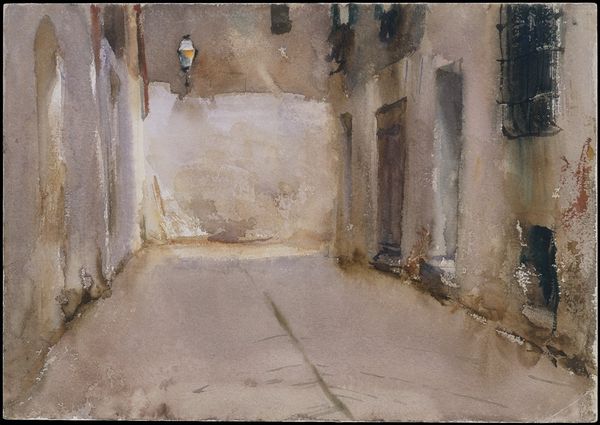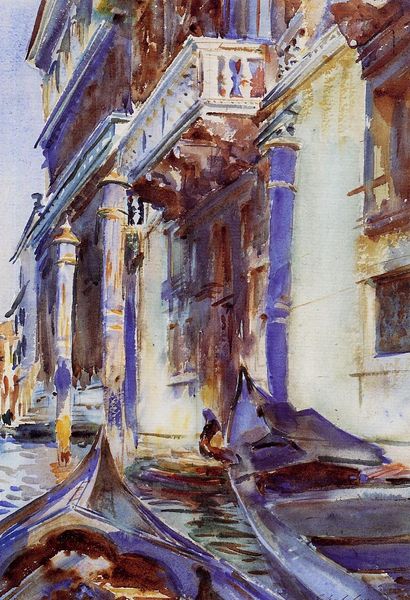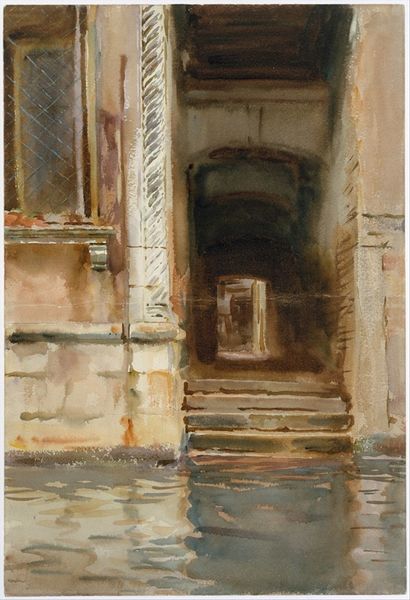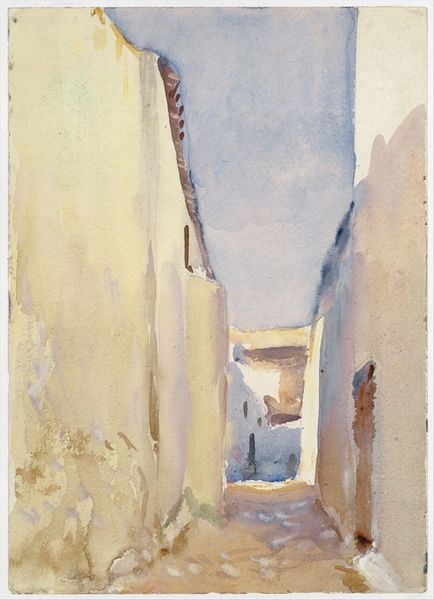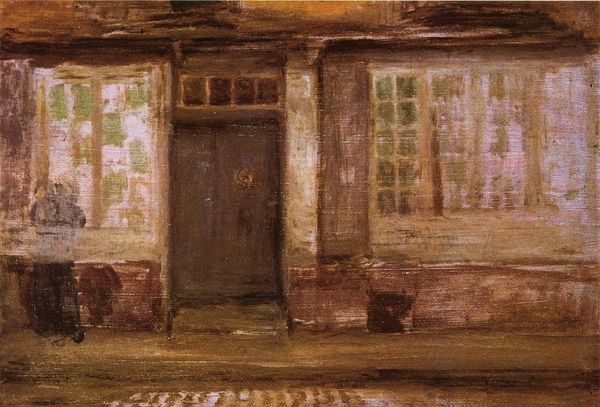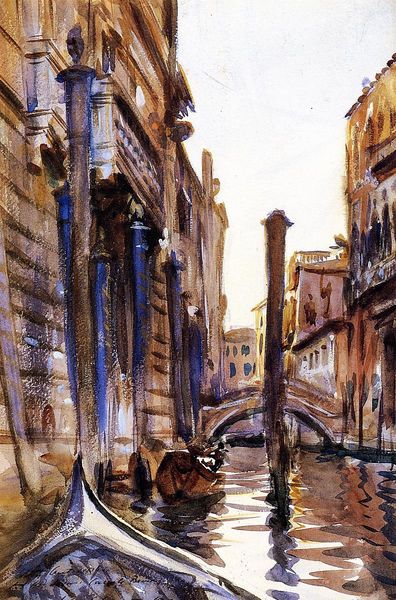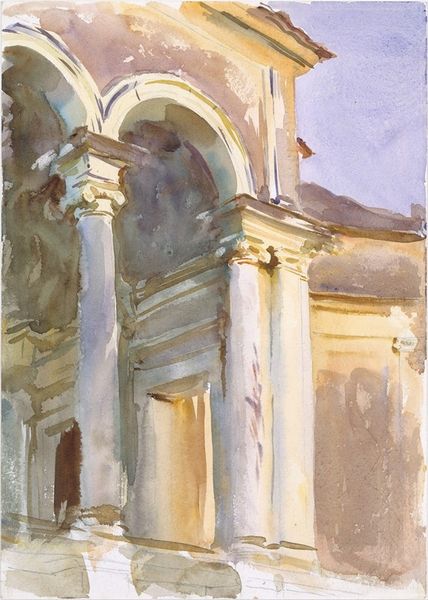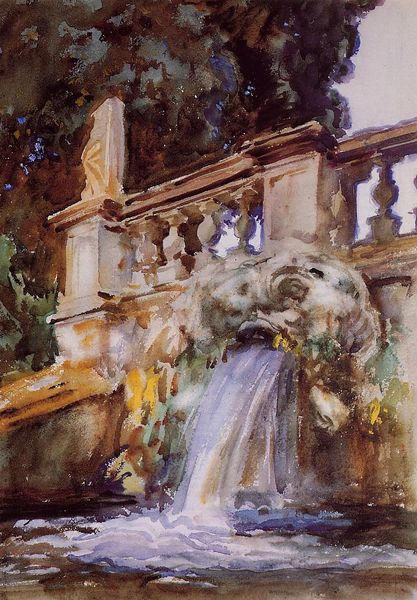
Dimensions: 36.19 x 50.8 cm
Copyright: Public domain
Editor: We're looking at John Singer Sargent's "Base of a Palace," a watercolor from 1904. It strikes me as simultaneously solid and ethereal; the architecture feels monumental, yet the medium lends it a dreamlike quality. What formal elements stand out to you in this piece? Curator: The composition immediately draws the eye, doesn't it? Sargent employs a stark contrast of light and shadow to delineate the architectural forms. Notice the geometric structure – the rectangular blocks, the sharp angles of the buildings – how the structural organization conveys depth through the use of one-point perspective? Do you observe any repeating shapes? Editor: Yes, now that you mention it, the rectangles of the building blocks echo in the shapes of the steps leading down to the water. What does that repetition accomplish? Curator: The repetition not only provides a visual rhythm, guiding the eye through the composition, but it also serves to emphasize the imposing nature of the architecture. What else do you notice about his color choices and technique? Editor: Well, there's a very limited palette of mostly browns and grays, but he uses them so effectively to create a sense of light reflecting off the water and stone. It’s impressionistic, capturing a fleeting moment rather than precise detail. Curator: Precisely. The brushstrokes are loose and suggestive, capturing the essence of form rather than meticulously rendering every detail. Sargent reduces the palace to its fundamental forms, expressing its volume and texture through the interplay of light, shadow, and compositional elements. What might that choice express? Editor: Maybe it reflects the power and age of the palace while also reminding us that, like a dream, it can be gone in a moment. This analysis gave me a new appreciation for how all of those details combine. Curator: And it reveals how the formal elements are really integral to its deeper expression. By analyzing its structure, we find its meaning.
Comments
No comments
Be the first to comment and join the conversation on the ultimate creative platform.



